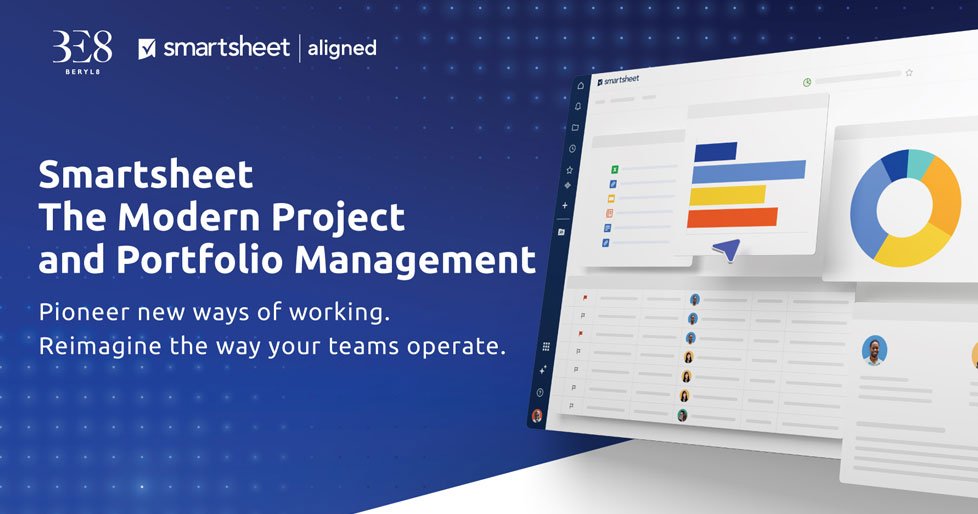6 Frequently Asked Questions about CLM

If your role involves any aspect of the contract process, you have likely heard of contract lifecycle management or CLM solutions. You may be aware that CLM can help address common challenges in contract processes such as visibility into status, version control, or routing contracts to the right party in the right order. But what exactly is CLM, and how do you know if your organization could benefit from it?
We spoke to DocuSign CLM customers to find out how they navigated the CLM evaluation process and the common questions they had.
Frequently asked questions about CLM
1. How did you know your organization needed CLM?
A strong indication your organization could benefit from CLM is if there are frequently bottlenecks in your contract process. Do you find that your team’s contracts are often stalled at the generation, approval or signing stages, creating a slow process and poor experience? Here’s what several DocuSign customers found that led them to consider CLM.
“Our business had been using Salesforce for about 5 years and they decided that they likely weren’t utilizing the system to its capabilities and that they needed to bring on a Salesforce admin, so they hired me. It only took me about a month or two to realize that people were using the system in largely time-consuming, manual processes to generate documents. This was a large stressor on time, and when we initially discovered eSignature with DocuSign we thought, there has to be an easier way to pre-fill these documents with Salesforce, and it snowballed from there. We found CLM products through research.” - Kim Wargo, FineMark Bank
“Prior to the pandemic, we had discussions around some issues in contracting processes that we were having. Specifically, a lot of manual processes, and we started to think about some technology solutions that might be able to help us there. Of course the pandemic exacerbated our situation and set a lot of pieces in motion. We were forced to move most of our workforce remotely and were very dependent on paper processes and wet ink signatures. We decided to move to DocuSign eSignature, and then realized the issues we were having with email managed agreements.” - Mick Mitchell, Oregon Health Authority
Learn more about how to assess whether your organization can benefit from CLM.
2. How do you convince others in your organization that CLM is a priority?
If you manage any part of the contract process regularly, you are likely familiar with the challenges that a manual, decentralized contract process can create. But your leadership may not be aware of the impact of these challenges. How do you raise awareness of the need for CLM and the business impact it can have?
Here’s how DocuSign customers gained support for CLM in their organizations:
“The process of convincing others involved describing the benefits of the solution in the best way that I could in layman’s terms. The way I positioned the buying process internally is that this solution is right for us because we are trying to lean out processes, make them faster, while staying compliant and secure. We can eliminate multiple data entry platforms, eliminate keystroke errors or wrong documentation errors. Being involved in an industry where compliance and regulations are paramount this spoke volumes to the buying committee internally.” - Kim Wargo, FineMark Bank
“There were some concerns about making sure everything was legal and binding but DocuSign was completely certified and put to rest those questions incredibly quickly. We had to move fast because of the pandemic and how it slowed down our processes. By showing what capabilities and effect CLM could have on our throughput time, was the most important factor.” - Mick Mitchell, Oregon Health Authority
Find more guidelines on how to build a business case for CLM in this eBook.
3. What are the main challenges a CLM implementation can help address?
DocuSign recently surveyed global contracting professionals and found some of the most common contract routing challenges include:
- Collecting timely signatures
- Re-signing documents due to errors
- Signing in the right order
- Routing time
- Visibility into document activity/status
- Verifying signer identity
Here are the specific challenges one DocuSign customer was looking to solve when they began considering a CLM solution:
“Our contract process before CLM was very slow comparatively. There was a lot of hidden mess that needed to be managed and sorted through. There was additionally a lack of overall transparency because of our process that was mainly managed via email. Most of our business is solved through contracting and with an average time of contract execution of over 90+ days it was just getting to the point where something had to be done.” - Mick Mitchell, Oregon Health Authority
4. What other business systems do CLM solutions integrate with?
One thing that is unique about the contract process is that it involves multiple departments across the organization. However, the systems each of those departments uses aren’t often connected to one another. For example, an HR offer letter initiates in HR (HCM), and before it can be sent, finance might have to approve it (ERP). And once signed, IT must provision the new employee (ServiceNow). If these different systems are not connected, it can result in a lot of duplicate work (and potential for error) as information from contracts is re-entered into each system.
Here are the integrations that DocuSign customers prioritized as part of their CLM consideration process:
“DocuSign offers a Salesforce integration which was incredibly important for us, we’re looking to upgrade to the newest version of CLM and at that point getting Apps Launcher which will be important for us to build customization and document flow.” - Kim Wargo, FineMark Bank
Due to the seamless integration between Salesforce and DocuSign CLM, Wargo was able to build 100 document templates in just three weeks, a process that would have taken 3+ months with her previous system. Now, trust packets, which can consist of up to 45 documents, require only 30 minutes to create, rather than the 4 to 5 hours it took previously.
FineMark also leverages an API integration with nCino, so that loan negotiation and contract completion all happen in one system.
Read more about best practices for CLM integrations.
5. How do you select a CLM vendor?
You may be familiar with the benefits of CLM, but not all solutions are made equal. It’s important to find one that will meet your needs now—and in the future. The checklist below details some of the most important capabilities to consider as you evaluate CLM solutions.
- Configurable workflows: This is at the core of the automation CLM offers, so be sure to dig deep here. Look for a solution that lets you build custom workflows, with enough flexibility to meet your specific needs.
- Document generation capabilities: Find a solution that lets you create preconfigured templates, which automatically pull data and pre-approved language into contracts.
- Integrations: Your organization is more likely to use CLM when it works with systems you already use. Seek out a solution that can integrate with your key systems of record like Salesforce, NetSuite or SAP Ariba.
- Security: Ideally, the solution is certified in leading regulatory and industry standards like ISO 27001:2013, SOC 2, and FedRAMP.
- Centralized repository: Find a solution that stores contracts in a permission-controlled repository, leading to better organization, search and access.
- Ease of implementation: Select a solution that meets your budget and timeline. The more customization you need, the more you should expect to invest.
- Support and services: Support and services are critical to getting things done right and should be heavily scrutinized to ensure success.
Here is how a few DocuSign customers approached the vendor selection process:
“I was actually using DocuSign as eSignature and another CLM solution for document generation and the provider I was using was fairly clunky and it took too long and was too complex to build workflows and get them up and running. There was too much build on the backend and as the only admin at our organization I needed software that had the complex functionality but was more nimble to use.
Because we had been using DocuSign and trusted the organization we decided to move over our CLM use-cases specifically because of the stronger, more flexible workflows that are so easy to implement. DocuSign CLM has quick agile workflow creation that set itself apart from our former CLM provider as well as an incredibly easy Salesforce integration. The nimble way that the software works while competing solutions are generally clunky and require substantial backend set-up sets DS CLM apart.” - Kim Wargo, FineMark Bank
“We had looked at a few of the DocuSign competitors in our evaluation process and what we found was that there wasn’t the same level of flexibility in the systems that we needed to be confident with our use-case. DocuSign stuck out because of the ease of use, flexibility in workflows, and additional how trusted the brand was.”Additionally, DocuSign e-Signature is known and is a well-known brand. The trustedness of the organization gave us confidence in the choice.” - Mick Mitchell, Oregon Health Authority
6. How can you measure ROI from CLM?
Contract lifecycle management solutions automate and standardize the contract process. With major bottlenecks eliminated, the contract process speeds up so deals close sooner, expediting the time to revenue. Common benefits include:
- Increased efficiency
- Reduced risk
- Reduced error rates
- Increased productivity
- Greater visibility
- Better experience
Here are some of the benefits we’ve heard from our customers about the ROI they have experienced after implementing DocuSign CLM:
“Throughput times in the paper contracting process ranged from 60 to greater than 100 days to completing a contract request. We now target 60 days or less for new contracts, 30 days or less for contract amendments. We’ve slashed the amount of time that we spend managing our contracts in general with the automation that DocuSign CLM provides.” - Mick Mitchell, Oregon Health Authority
“We took a process that used to take hours of onboarding down to the click of a button, the ROI with DocuSign CLM was immediate and saved time and money from the beginning.” - Kim Wargo, FineMark Bank
“Docusign CLM has enabled me to be extremely service-oriented with my team—at a low cost. I’m working faster and more collaboratively, this is due to streamlining our agreement lifecycle by transforming outdated, analog processes—such as lease tracking—into a digital automated workflow that saves employees time and reduces dependency on the legal team” - Drybar
Experience the Right CLM for yourself: Try DocuSign for free! Click here.
Or if you need more information about DocuSign, please click.



